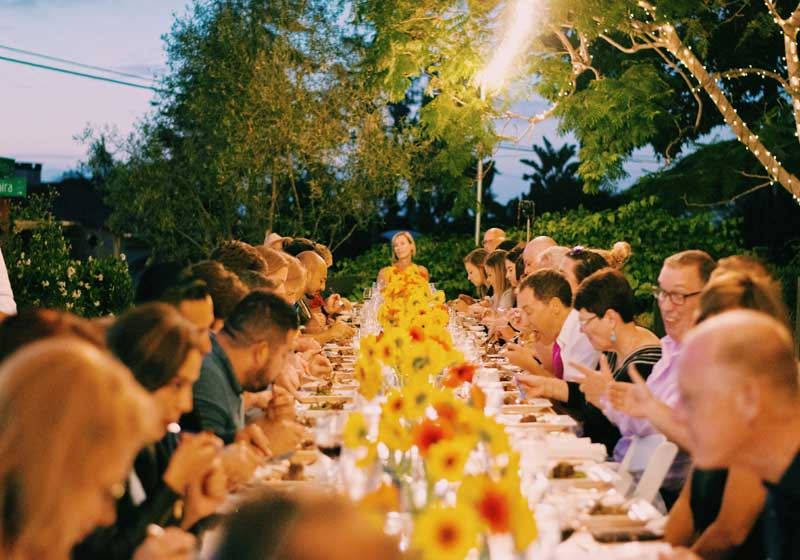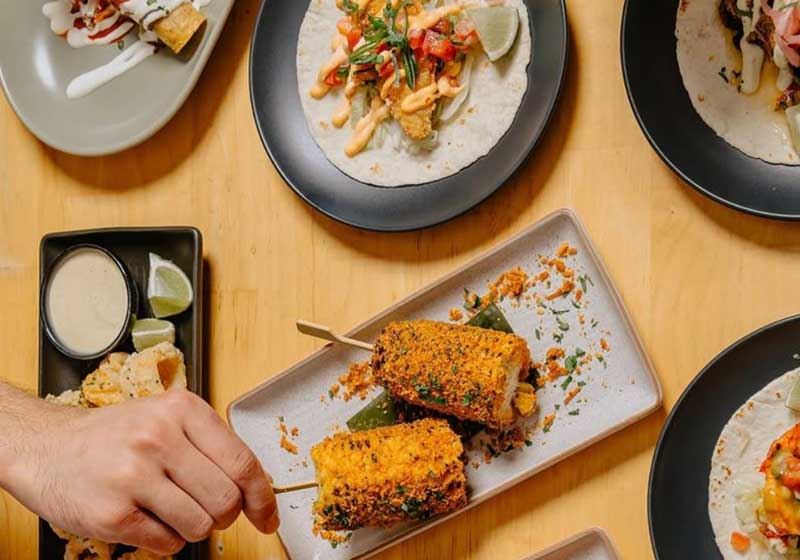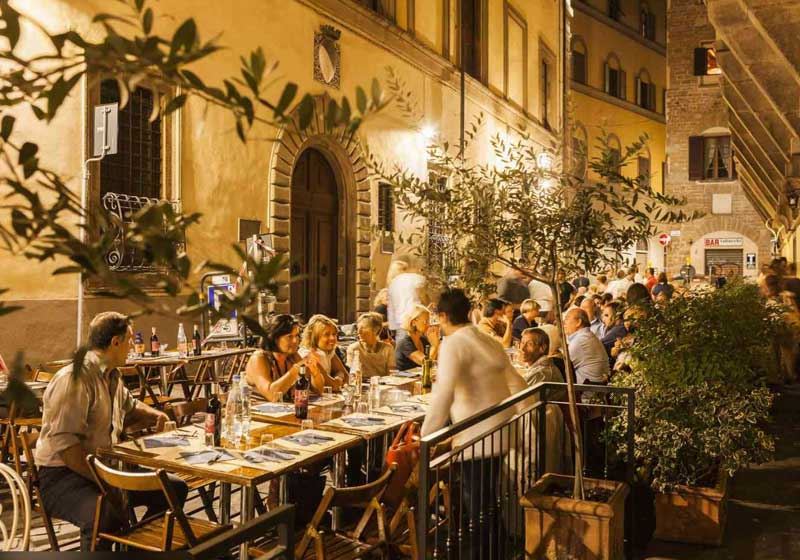By Marie-Antoinette Issa.
Long before restaurants started stacking menus with ‘small plates to share’ and convincing us that if you wanted a little culinary cred, you needed to order more than one dish, entire cultures had already built their dining traditions on this idea.
The communal table isn’t some new hospitality trend dreamed up in a painfully hipster inner city wine bar, it’s an age-old way of eating that celebrates generosity, togetherness and abundance.
From Middle Eastern mezza feasts to Ethiopian banquets, these are the cuisines that remind us sharing isn’t just caring, it’s delicious.
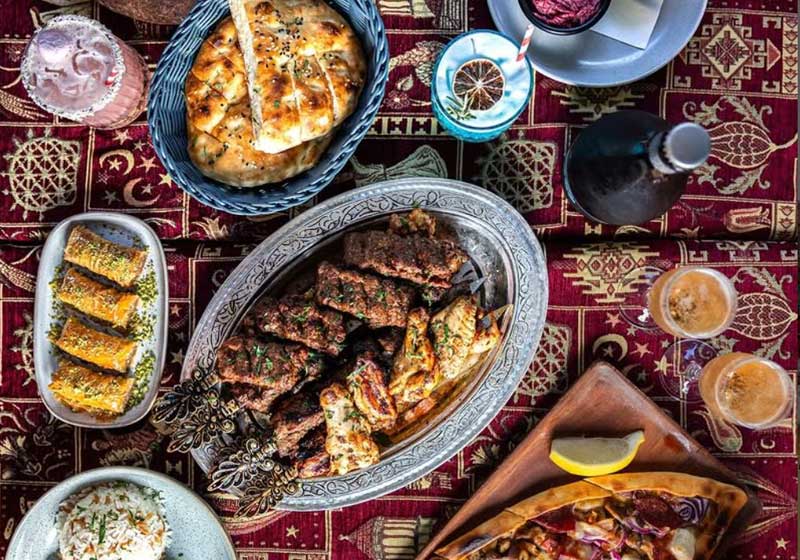
Middle Eastern Mezza
If you’ve ever sat down at a Lebanese table, you’ll understand the magic that makes mezza so much more than a meal. Think small bowls of hummus, baba ghanoush, labneh and smoky mutabal dip being scooped up in torn pieces of freshly baked pita bread that doubles as a spoon.
Debates over the superiority of tabouli versus fattoush salad and sizzling skewers of marinated meat, where lamb and chicken are the stars are often served alongside fresh balls of falafel for those who prefer their protein plant-based.
Mezza embodies the Middle Eastern philosophy of hospitality, where abundance is a language of love. It’s not about having one dish each, it’s about everyone leaning in, reaching across the table and sharing the bounty so no one leaves hungry.
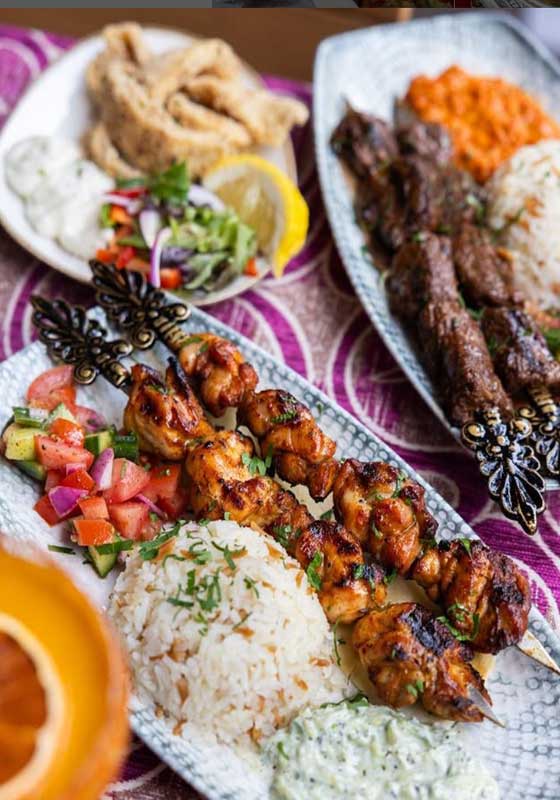
The Greeks embrace a similar concept with meze plates that feature olives, grilled halloumi, taramasalata, dolmades and keftedes served in generous portions for the table. Italians too, have their own take with antipasti, where platters of cured meat, cheese, marinated vegetables and crusty bread are laid out as an invitation to linger.
While each culture’s spread looks different, the spirit is the same. Eating in this way blurs the line between appetiser and main, turning the table into a rolling conversation of flavours.
Chinese Lazy Susans
In Chinese dining culture, the round table rules. At the centre sits the Lazy Susan, a spinning wheel of fortune that ensures no one misses out on their fair share of Peking duck, steaming dumplings or glistening plates of stir fry.
This clever invention isn’t just practical; it reflects the Chinese value of balance and equality. Everyone has access to every dish, no elbows are jostled and the ritual of rotating the table adds a playful rhythm to the meal. Whether at a family reunion banquet or a simple Sunday yum cha, the Lazy Susan has been making communal eating seamless for centuries.
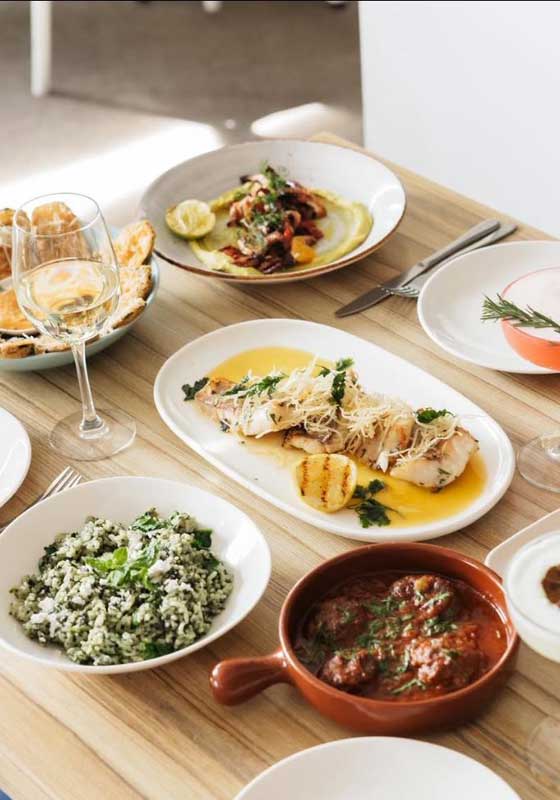
Spanish Tapas
The word tapas comes from the Spanish verb tapar, meaning to cover and it’s said the tradition began with bartenders placing a slice of bread or ham over drinks to keep out flies. From that humble start grew one of the world’s most famous ways of eating. Tapas is all about grazing, whether it’s garlicky prawns sizzling in oil, croquettes that crunch and ooze or patatas bravas smothered in spicy sauce.
In Spain, tapas isn’t just a meal, it’s a way of life. Friends hop from bar to bar, sharing plates, sipping sherry and chatting late into the night. It’s casual, social and endlessly satisfying.
Korean Banchan
In Korea, no meal feels complete without a colourful array of banchan. These little side dishes arrive in a joyful clutter of small bowls, surrounding the main event whether it’s bubbling jjigae or smoky bulgogi. Expect kimchi in all its spicy, funky glory, alongside pickled radishes, seasoned spinach and tiny anchovies cooked until crisp.
The beauty of banchan is variety. You get sweet, salty, sour and spicy all in a single sitting and every diner dips in and out of the spread as they please. It’s food designed to be eaten in chorus, a harmony of flavours that mirrors the social nature of Korean dining.
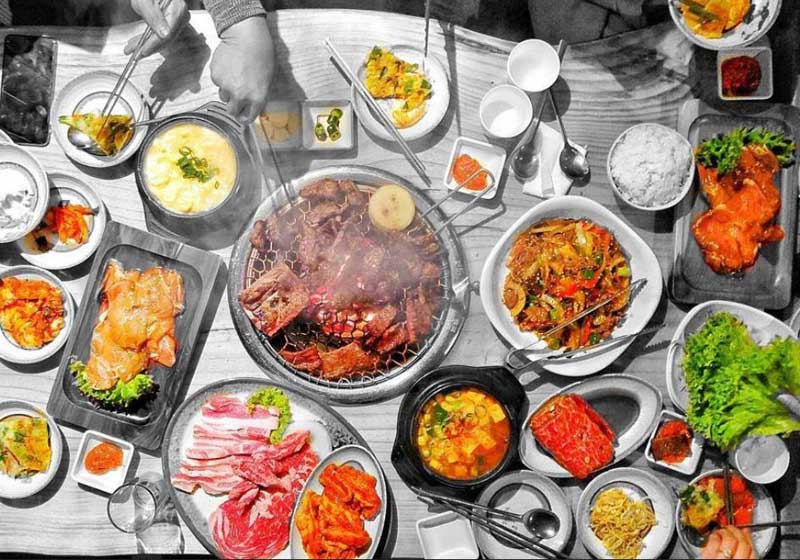
Ethiopian Injera
Ethiopians have their own take on the share plate - even when no plates are actually in sight! Instead, the table is set with injera, a spongy sourdough flatbread that doubles as both appetiser and utensil. Curries, stews and vegetables are spooned on top of a large round of injera and diners tear off pieces to scoop up mouthfuls.
No knives or forks are needed. Eating from the same shared platter is an act of connection, and the ritual of feeding others a bite directly with your hand known as gursha takes sharing to the next level. The tangy bread, the bold spices and the sense of intimacy is a reminder that food at its best is about communion as much as flavour.
Swiss Fondue
Finally, Switzerland joins the small-plates tradition with its own communal spin: fondue. In this interactive dining ritual, diners gather around bubbling pots of cheese or broth, spearing bite-sized morsels of bread, vegetables or thinly sliced meat to cook in the heat.
Fondue isn’t just food, it’s about the shared rhythm of anticipation and enjoyment. Lifting a skewer from the pot and dipping it into a rich cheese, or cooking a delicate slice of beef in aromatic broth, transforms eating into a playful, social ceremony. Much like other shareable traditions around the world, Swiss fondue celebrates the joy of cooking together at the table and the connections that form while food passes from hand to hand.
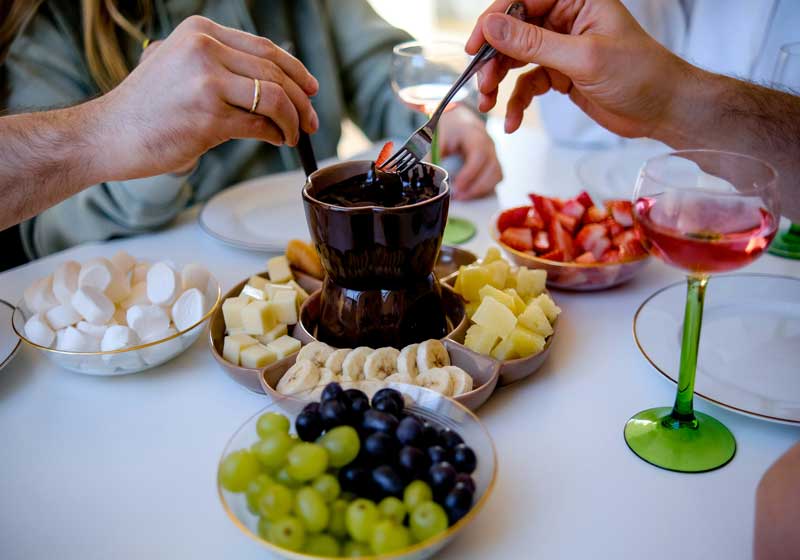
The Original Food Trend
When you look at these traditions side by side, it becomes clear that the modern obsession with small plates is really just a rediscovery of something ancient. Chefs may frame it as progressive dining, but for generations, families and friends have been gathering around tables filled with many dishes to be enjoyed together.
It’s not just about variety, though that is undeniably part of the appeal. It’s about conversation, about slowing down, about noticing the way a table can transform strangers into companions when everyone dips into the same dish.
So, the next time a menu suggests ‘designed to share’ remember that this isn’t some fleeting fad. It’s a global tradition that stretches from the souks of Beirut to the tapas bars of Barcelona. Cultures around the world have always known that food tastes better when it’s enjoyed together and we’re just lucky to be catching up.


